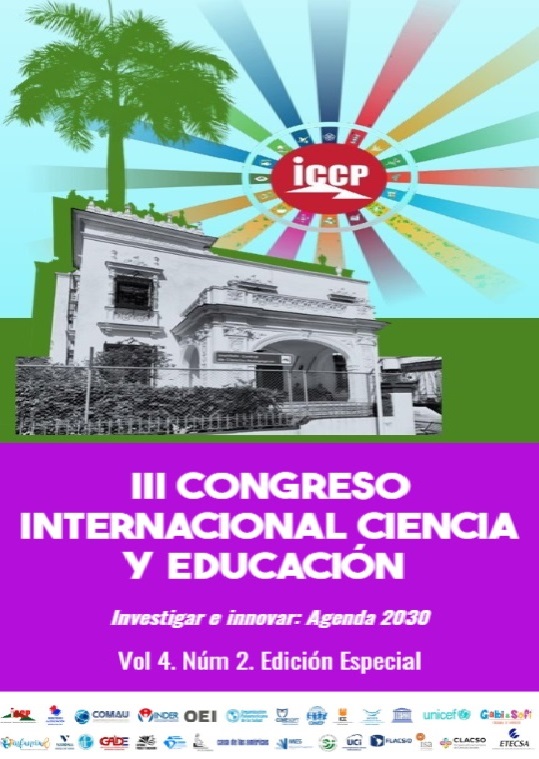Playful resources applied to the teaching-learning process
Abstract
Traditional methods are being complemented by innovative approaches that seek to improve students' motivation and academic performance. The objective of the study is to analyze and synthesize the available evidence on the effectiveness of recreational resources at different educational levels, identifying their benefits, challenges and best practices. A systematic review methodology was used that included searching academic databases such as PubMed, ERIC and Google Scholar. Studies published between 2010 and 2024 were selected that evaluated the impact of recreational tools such as board games, educational video games, and gamification dynamics. The inclusion criteria considered empirical studies with experimental and quasi-experimental designs. The results revealed that recreational resources significantly improve student engagement and motivation. Additionally, an increase in the retention of knowledge and skills was observed, especially in areas such as mathematics, science, and foreign languages. The review concludes that recreational resources represent a valuable tool in the teaching-learning process, promoting a more dynamic and participatory educational environment. However, to maximize their effectiveness, careful planning and integration of these resources in a manner consistent with pedagogical objectives is crucial.
Downloads
References
Alsawaier, R. S. (2018). The effect of gamification on motivation and engagement. The International Journal of Information and Learning Technology, 35(1), 56-79. https://doi.org/10.1108/IJILT-02-2017-0009
Barab, S., Gresalfi, M., & Ingram-Goble, A. (2010). Transformational play: Using games to position person, content, and context. Educational Researcher, 39(7), 525-536. https://doi.org/10.3102/0013189X10386593
Chou, Y. K. (2015). Actionable gamification: Beyond points, badges, and leaderboards. Octalysis Media.
Dicheva, D., Dichev, C., Agre, G., & Angelova, G. (2015). Gamification in education: A systematic mapping study. Journal of Educational Technology & Society, 18(3), 75-88. https://www.jstor.org/stable/jeductechsoci.18.3.75.
Deterding, S., Dixon, D., Khaled, R., & Nacke, L. (2011). From game design elements to gamefulness: Defining "gamification". Proceedings of the 15th International Academic MindTrek Conference: Envisioning Future Media Environments, 9-15. https://doi.org/10.1145/2181037.2181040.
González, C. S., Gómez, N., Navarro, V., Cairós, M., Quirce, C., Toledo, P., & Marrero-Gordillo, N. (2016). Learning healthy lifestyles through active videogames, motor games and the gamification of educational activities. Computers in Human Behavior, 55, 529-551. https://doi.org/10.1016/j.chb.2015.08.052.
Hamari, J. (2017). Do badges increase user activity? A field experiment on the effects of gamification. Computers in Human Behavior, 71, 469-478. https://doi.org/10.1016/j.chb.2015.03.036.
Kapp, K. M. (2012). The gamification of learning and instruction: Game-based methods and strategies for training and education. Wiley.
Lepper, M. R., & Malone, T. W. (1987). Intrinsic motivation and instructional effectiveness in computer-based education. In R. E. Snow & M. J. Farr (Eds.), Aptitude, learning, and instruction: Cognitive and affective process analyses (pp. 255-286). Erlbaum.
Llorens-Largo, F., Gallego-Durán, F. J., Villagrá-Arnedo, C. J., Compañ-Rosique, P., Satorre-Cuerda, R., & Molina-Carmona, R. (2016). Gamification of the learning process: Lessons learned. IEEE Revista Iberoamericana de Tecnologías del Aprendizaje, 11(4), 227-234. https://doi.org/10.1109/RITA.2016.2619790.
Malone, T. W. (1981). Toward a theory of intrinsically motivating instruction. Cognitive Science, 5(4), 333-369. https://doi.org/10.1207/s15516709cog0504_2.
Prensky, M. (2001). Digital game-based learning. McGraw-Hill.
Salen, K., & Zimmerman, E. (2004). Rules of play: Game design fundamentals. The MIT Press.
Schell, J. (2008). The art of game design: A book of lenses. Morgan Kaufmann.
Simões, J., Redondo, R. D., & Vilas, A. F. (2013). A social gamification framework for a K-6 learning platform. Computers in Human Behavior, 29(2), 345-353. https://doi.org/10.1016/j.chb.2012.06.007
Sheldon, L. (2011). The multiplayer classroom: Designing coursework as a game. Course Technology PTR.
Sung, H. Y., & Hwang, G. J. (2013). A collaborative game-based learning approach to improving students' learning performance in science courses. Computers & Education, 63, 43-51. https://doi.org/10.1016/j.compedu.2012.11.019
Ulrich, K. R. (2019). Game-based learning. In J. M. Spector (Ed.), Handbook of research on educational communications and technology (pp. 517-533). Springer.
Werbach, K., & Hunter, D. (2012). For the win: How game thinking can revolutionize your business. Wharton Digital Press.
Zichermann, G., & Cunningham, C. (2011). Gamification by design: Implementing game mechanics in web and mobile apps. O'Reilly Media.
Copyright (c) 2024 Diego Fernando Diego Fernando Ayala Laverde ,Tannia Jimena Cabezas Aguirre ,Astrid Amparo Cabezas Aguirre,Lorena Elizabeth Madril Rivera ,Miryam Lucrecia Madril Rivera

This work is licensed under a Creative Commons Attribution-NonCommercial-NoDerivatives 4.0 International License.






